In the last article we presented the Albatros D.II; now it’s time to present you some of the aces who piloted this aircraft, which is featured in the WW1 Wings of Glory Airplane Packs: the German Aces Oswald Boelcke, Manfred Von Richthofen and Rudolf Szepessy-Sokoll.
Oswald Boelcke
Oswald Boelcke was one of most famous German flying aces of the First World War and, thanks to his great tactic abilities, he became one of the most influential patrol leaders of air combat during the early years of aviation. Boelcke is considered the father of the German air force and, because he formalized the rules of air fighting in his famous “Dicta Boelcke,” he gained the title, “Father of Air Fighting Tactics”.
Boelcke was born in Giebichenstein and immediately became an active duty pilot after he passed his final pilot's exam on 15 August 1914. Due to the influence of his elder brother, Hauptmann Wilhelm Boelcke, Boelcke was initially posted to Fliegerabteilung 13 (Aviation Section 13), of which Wilhelm was a member. Boelcke won an Iron Cross Second Class for flying 50 missions with this unit, accompanied his brother, but aroused the antipathy in other members of the section, causing Wilhelm's ultimate transfer away from his brother.
Boelcke was transferred to Fliegerabteilung 62 in April 1915, which was based at Douai. Here, with Max Immelmann, Otto Parschau, and Kurt Wintgens, he had access to three of the five prototypes of the Fokker E.I, the first airplane with a gun synchronizer allowing timed shots through the Fokker's propeller.
Boelcke won his first individual aerial combat on 19 August 1915 and, just nine days later, he became a hero on the ground for diving into a canal near his aerodrome, fully clothed, and rescuing a drowning French boy, Albert DePlace. The child's parents wanted Boelcke to be awarded the French Legion d'Honneur; instead, he received the Prussian Lifesaving Medal.
While he promulgated rules for the individual pilot, his main concern was the use of formation fighting rather than individual effort. Germany's premier ace, Manfred von Richthofen (The Red Baron), was taught by Boelcke and continued to idolize his late mentor long after he had surpassed Boelcke's tally of victories.
Boelcke downed four more enemy aircraft by the end of the year and during that period had a "horse race" of victories with his first rival ace, Max Immelmann. On 1 November, the day after his sixth victory, Boelcke became the first German pilot to win the Royal House Order of Hohenzollern, followed by Immelmann six days later. Boelcke had three more "kills" in January 1916; Immelman had two. They were the first German fliers to be awarded the Pour le Mérite, Germany's highest military medal.
In March 1916, Boelcke received permission to use the forward airfield at Sivery near the Verdun offensive, where he connected a front line observation post to the airfield, thus establishing the first tactical air direction center. He was made leader of the newly formed Fliegerabteilung Sivery and led them in action over Verdun. This unit of six fighter pilots was the precursor of the German Jasta fighter squadron units.
The ace race with Immelmann was still on, with Boelcke becoming the first Überkanone with his 10th victory on 12 March. At this time, Boelcke focused on developing his personal tactics, flying in tight formations, trying to be more accurate in combat, and remaining within his own German lines. Boelcke won his challenge with Immelmann when his rival was killed on 18 June 1916 after his 17th victory. Boelcke, who then had 18 victories, was left the preeminent ace of the war. Kaiser Wilhelm II ordered Boelcke grounded for a month to avoid losing him in combat soon after Immelmann.
Thanks to the wise counsel of Boelcke, the German air force was being reorganized from the Fliegertruppe into the Luftstreitkräfte by mid-1916. Boelcke codified his Dicta, explaining his successful tactics, sharing his views on the creation of a fighter arm, and the organization of fighter squadrons.
He formed his first fighter squadron, choosing his pilots. Among his first selections, he chose Manfred von Richthofen, Erwin Bohme, and Hans Reimann. Boelcke was appointed commander of his hand-picked group of pilots on 30 August 1916. Three squadrons were initially founded on 10 August 1916, with Jagdstaffel 2 becoming the premier German unit. It ended the war with 20 aces among its members, a total of 336 victories, and a casualty list of only 44.
Boelcke died during a mission on 28 October 1916, trying to avoid a collision during a dogfight. Boelcke and Böhme, unaware of each other's presence, closed in on the same aircraft, while Von Richthofen dived in on the flight path of that very same aircraft while chasing another DH.2. Böhme's landing gear brushed Boelcke's upper wing, peeling off the upper wing of Boelcke aircraft, which immediately struggled for control. His aircraft crash-landed and, although the impact seemed survivable, Boelcke lap belt did not restrain him. Given he never wore a helmet when he flew, one of the great aviation aces died in his shattered Albatros D.II.
Manfred Von Richthofen
The Red Baron flew many different aircraft. We have already presented his biography for the Fokker Dr.I. Manfred von Richthofen also piloted the Albatros D.II and in this aircraft he fought one of his most famous dogfights against another great ace, Lanoe Hawker; a dogfight that became part of the aviation legend.
On November 23, 1916 the stage was set for an epic encounter. Despite having less flying experience than Lanoe Hawker, Manfred von Richthofen had already achieved more kills than his opponent, although contemporary records appear to show they had a completely different approach to flying.
On the one hand, Hawker seemed to enjoy flying for its own sake, doing aerobatics and practicing stall recovery techniques as he pleased, while von Richthofen went on record as saying, flying was a means to an end (defeating the enemy) and he had never performed aerobatics like “looping-the-loop”.
That November morning, Major Hawker, flying an Airco DH.2 “pusher” biplane, was one of three 24 Squadron pilots who attacked a formation of German two-seaters. It was a trap, and Richthofen's fighters fell upon the British trio as their intended two-seater victims ran for home.
Captain Andrews was leading the RFC machines with Major Hawker and Lieutenant (later Air Vice Marshal) Saundby as his wingmen. After spotting the larger formation of up to eight German scouts about to attack him, Andrews decided to try to break away and avoid a fight, but then he saw Hawker diving after their original two-seater targets and decided he must stay with the developing battle.
Both he and Saundby lost contact with their commanding officer's machine and soon both of their aircraft were hit. They managed to escape, but Hawker now faced the elite pilots of Jasta 2 alone.
As if the odds against him weren't bad enough, the British VC holder faced other difficulties. Not only was the performance of his aging DH.2 inferior to the Albatros D.II's he faced, but he was also over enemy lines, so any forced landing, even if he survived, meant that he would be taken prisoner.
The engagement between the great flyers began at around 6.000 ft with both twisting and turning as tightly as possible to get the other in their gun sight. This continued for several minutes, causing them to both lose altitude, descending to around 2,000 ft.
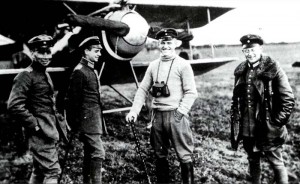
Some famous members of the Jasta 2: Stefan Kirmaier, Hans Imelmann, Manfred von-Richthofen, and Hans-Wortmann.
Neither pilot seemed to be gaining the upper hand, but after pulling into a loop and letting off a burst of fire, Hawker broke away and dashed toward the relative safety of the British lines. As he did so, Hawker appeared to acknowledge his opponent's skill by waving to him as he turned for home, but von Richthofen was determined to continue the fight and chased after him. The faster German Albatros began to catch the fleeing DH.2 and after a final maneuver, von Richthofen fired on his rival and hit him in the back of the head, gaining another victory.
Hawker's machine gun was taken from the wreckage, which Richthofen kept as a trophy at his family's castle. He later recalled: “I was extremely proud when I was told that the man I had downed was the “British Boelcke.”
The British VC winner was buried by German infantry soldiers, but as that land was fought over many times, the location of his grave remains unknown to this day. Manfred von Richthofen was in the early days of his flying career and would go on to become the top-scoring ace of the war and a true legend of military aviation.
Rudolf Szepessy-Sokoll
Oberleutnant Rudolf Szepessy-Sokoll Freiherr von Negyes et Reno was a World War I flying ace credited with five aerial victories. He was a tall man who joined the army in 1914 and distinguished himself in combat whilst serving with the Hussars Regiment No. 1.
He volunteered for the air service in the summer of 1915, scoring his first victory as an observer with Flik 17. In what may have been the first strategic bombing mission in history, Szepessy-Sokoll was a member of a flight of ten Lohner and Lloyd two-seaters that attacked Milan, Italy on 14 February 1916.
By early April 1917, Szepessy-Sokoll had completed pilot training and was assigned to Flik 10 on the Russian front. He served with Flik 27 in August 1917 and with Flik 3 in September 1917, where he scored his first victory as a pilot while flying an Albatros D.III.
He was killed in action the day after he became an ace: Rudolf Szepessy-Sokoll was shot down by the famous Italian ace Francesco Baracca. He was buried with full military honors in the cemetery near Ajello. He was posthumously awarded the Order of the Iron Crown, 3rd class.
Information sources: The Aerodrome, Wikipedia, FirstWorldWar.com, Military History, Flight Journal , WWI Resource Centre .

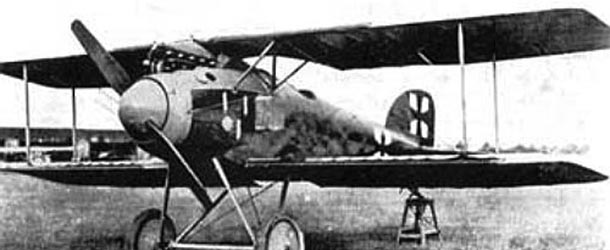
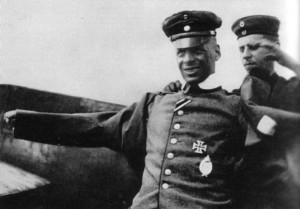
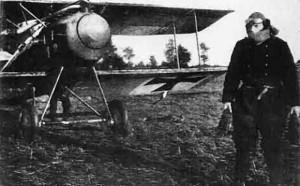
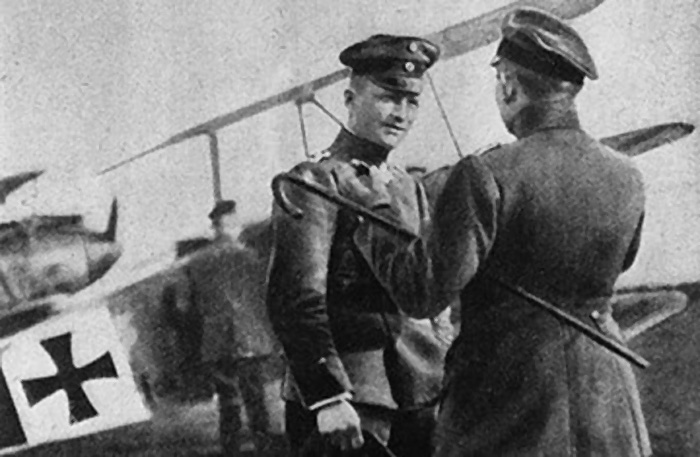
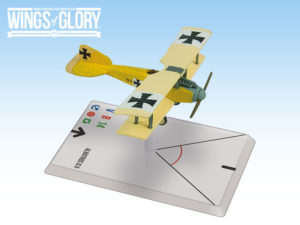



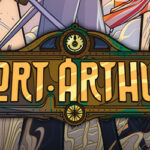


Follow Us on